Breaking the Silence: Wall + Response, the SF Public Library, and the Stories Not Allowed to Be Told to Help Some Sleep at Night
Mock up of Wall + Response exhibition at the San Francisco Public Library (SFPL)
Wall + Response, a Project Rooted in Collective Solidarity
In early November 2021 Maw Shein Win and I began working with the San Francisco Public Library (SFPL) on our upcoming exhibition Wall + Response, scheduled to open March 12, 2022, and run through July. The exhibit was to be the culmination of a two-year project we had curated, featuring 16 poets responding to the social, political, and racial justice narratives of four murals on Clarion Alley. Throughout the process of working with SFPL’s exhibitions team, Maw and I often noted how inspiring and life-affirming the project had been throughout.
We’d succeeded in bringing four sets of poets, artists, and organizations together to learn more about the stories behind the walls and to help inspire the creative writing response. The four murals selected for Wall + Response exemplify successful collaborations between artists and larger organizing forces to create public works and messaging that represents the power of art to support social change. The ensuing poems range in tenor from ineffable sorrow to incisive rage, with a spirit of collective solidarity throughout.
Clockwise from top: “Justice For Luís D. Góngora Pat” (2018) by Marina Perez-Wong and Elaine Chu, “What We Want!” (2011) by Emory Douglas/Black Panther Party / remix by CUBA D8, MACE, “Affordable Housing/Vivienda Asequible” (2016) by the SF Print Collective, “The Arab Liberation Mural/Will To Live” (2018) by Art Forces
Prior to the pandemic, we had planned to host four public events on Clarion Alley over nine months. Instead, we worked with videographer Mahima Kotian and sound editor Evan Karp to create four short films to screen as part of live online events, co-hosted with Booksmith. The shift required a lot of scheduling and rescheduling due to a combination of Covid, the wildfires that spread across Northern California, and the orange blight that blanketed the Bay Area and beyond in all its odious forms in 2020/21.
In addition to the films and events, we decided to create an edition of 50 signed broadside print portfolios. Maw and I designed the broadsides; Asa Nakata handmade the portfolio cases; and Sun Night Editions screen printed 30 broadsides for each edition, totaling 1,500 in all. While working on the broadsides, we were encouraged to find a space to exhibit the project. Our preferred venue was the San Francisco Public Library. We submitted a proposal and were thrilled when it was accepted to be included in the programming for 2022.
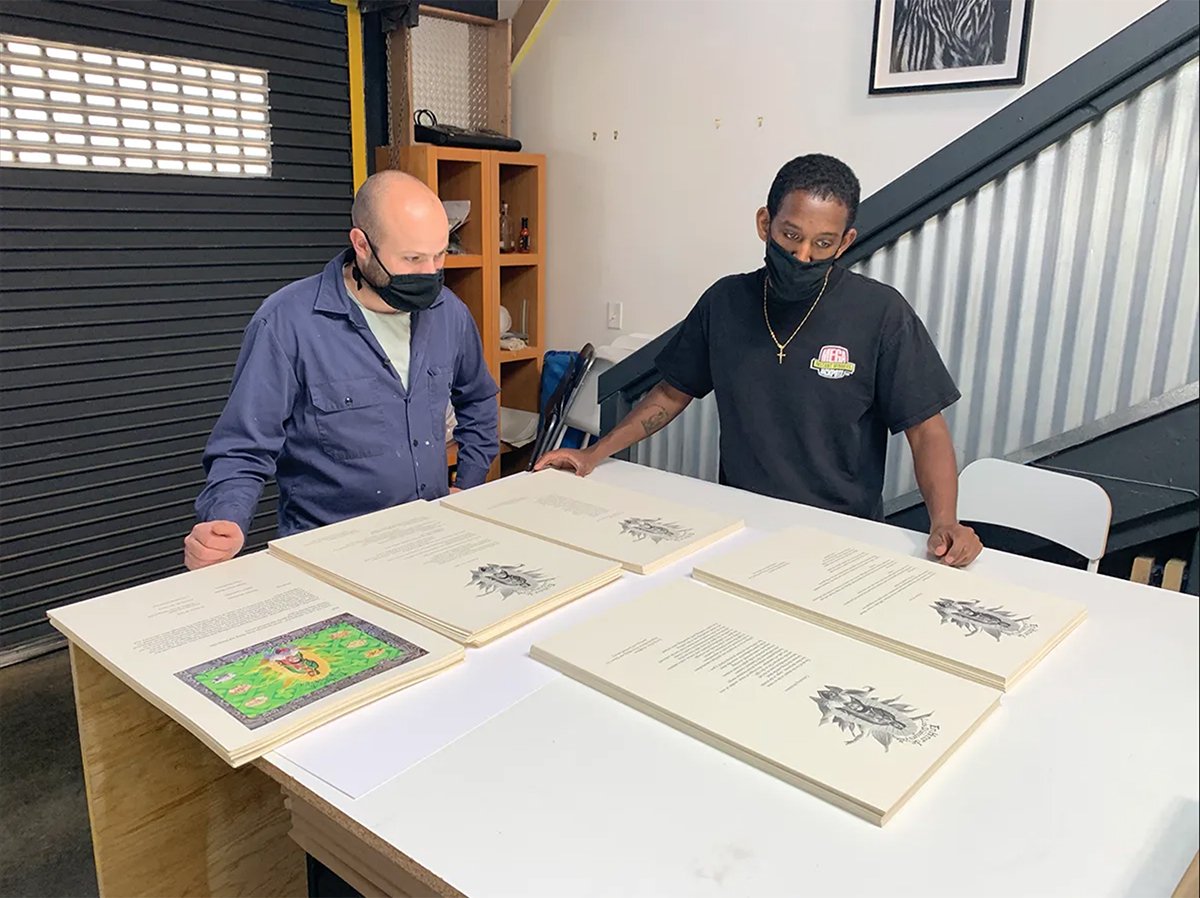
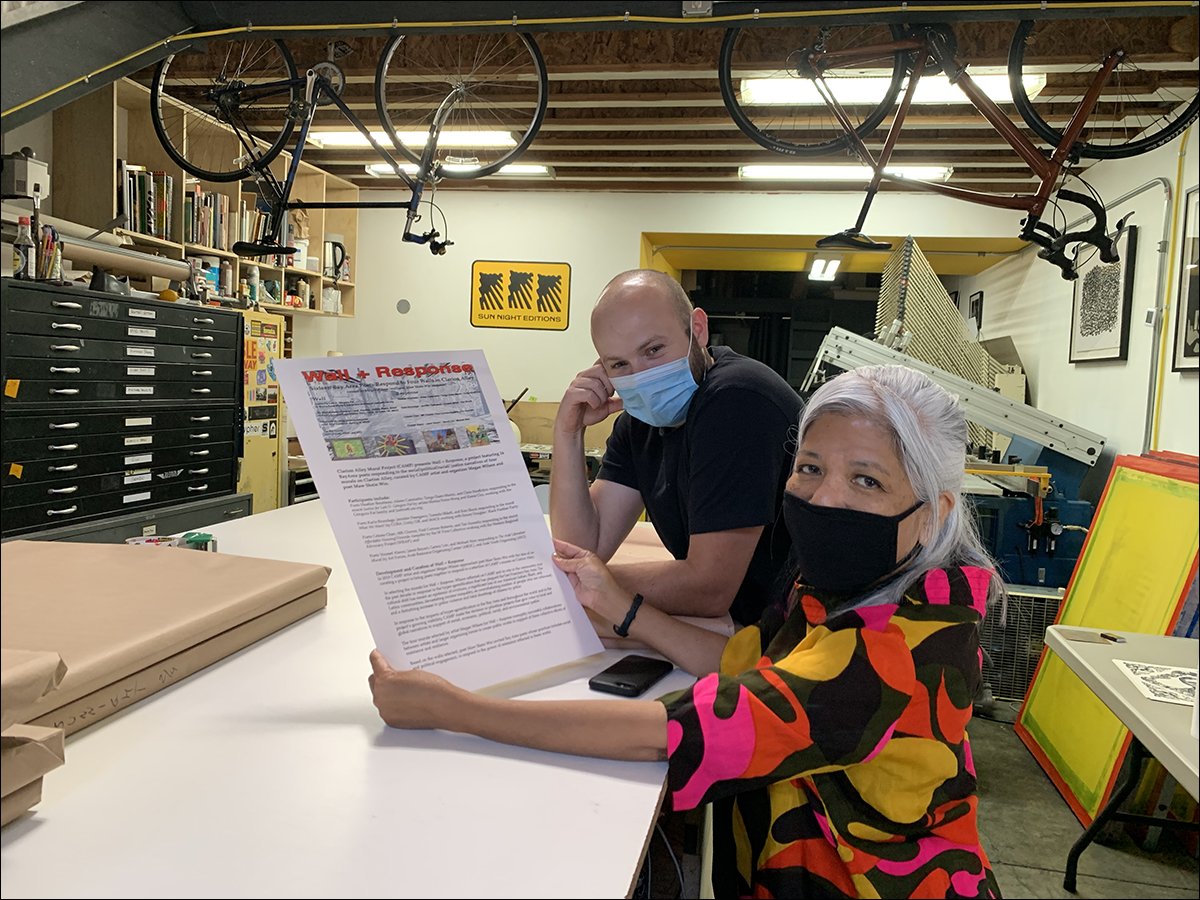
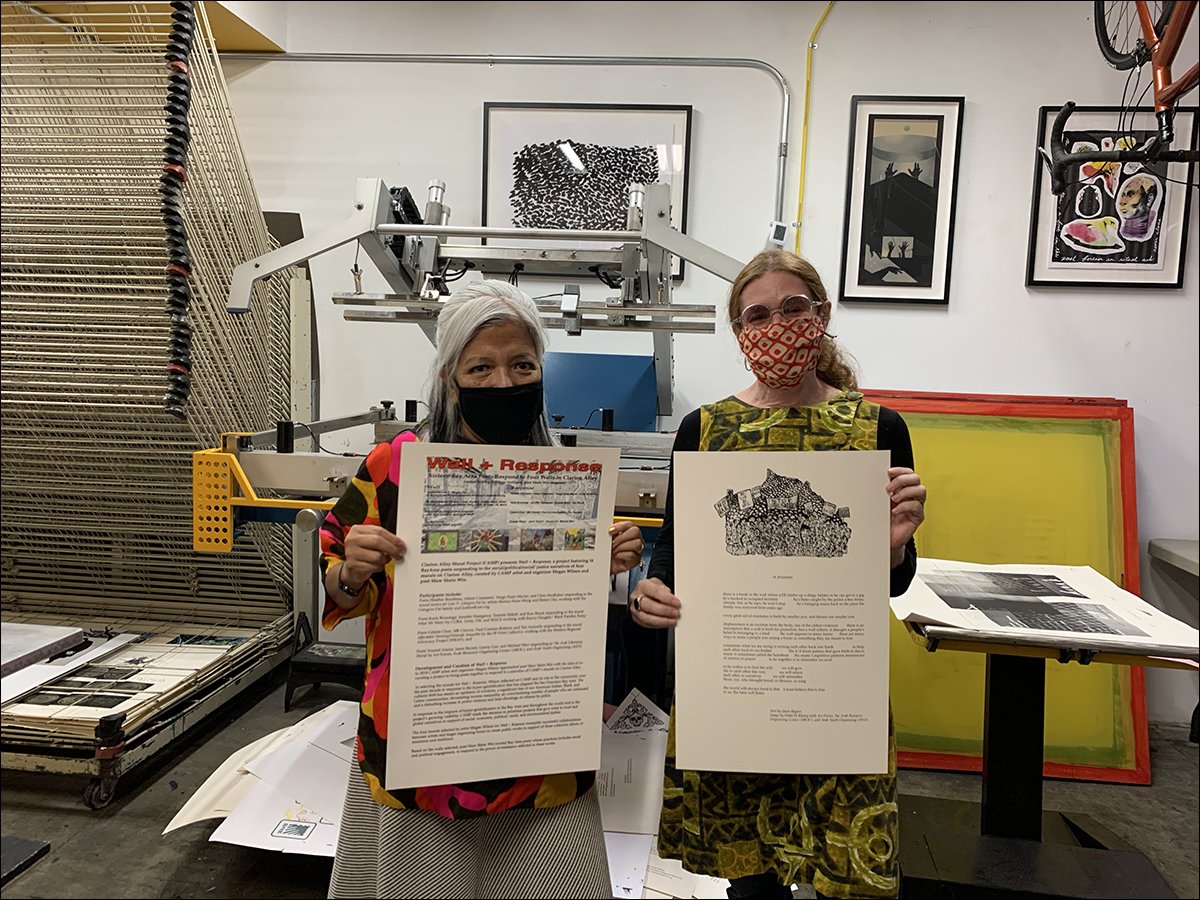

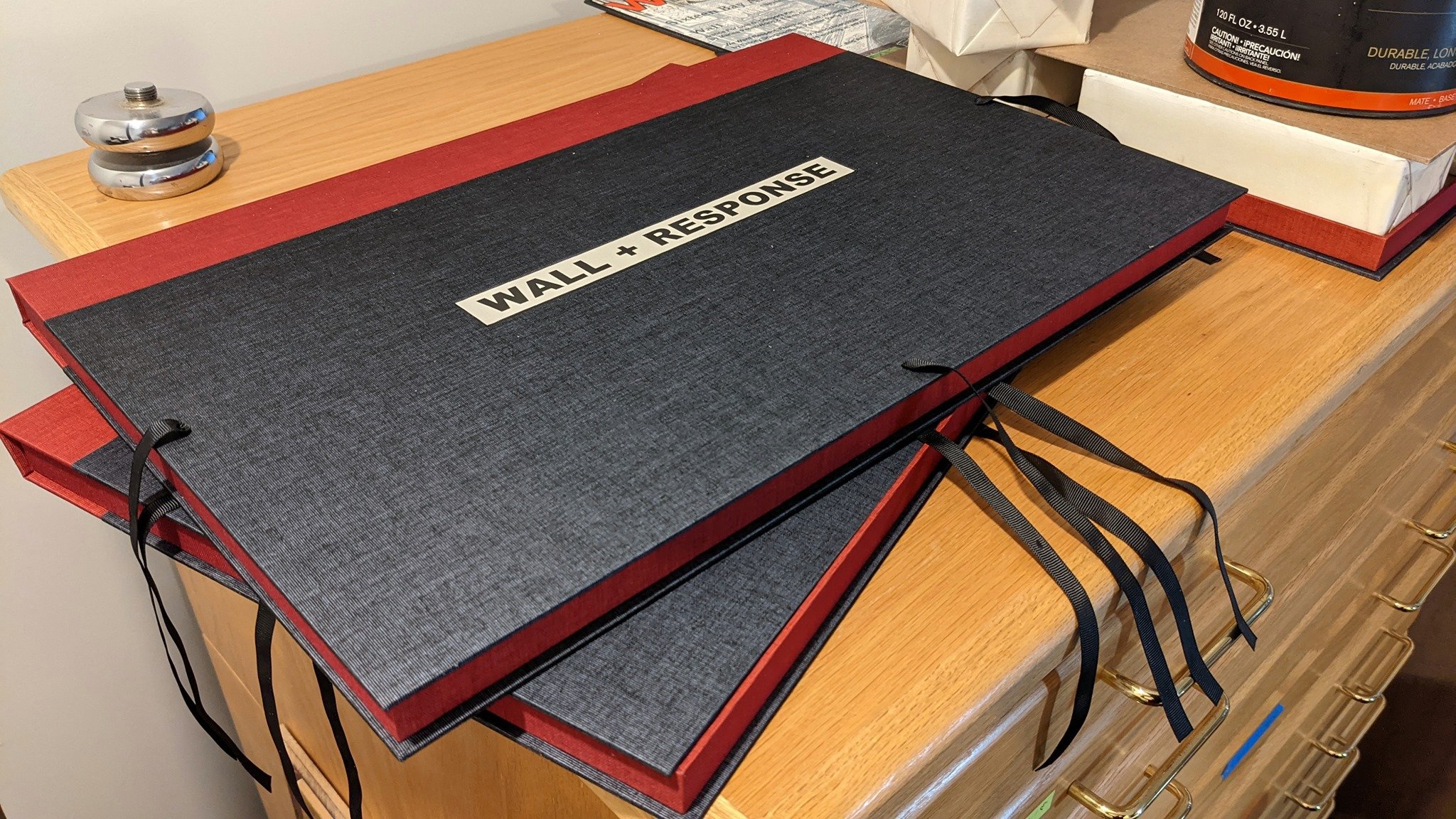
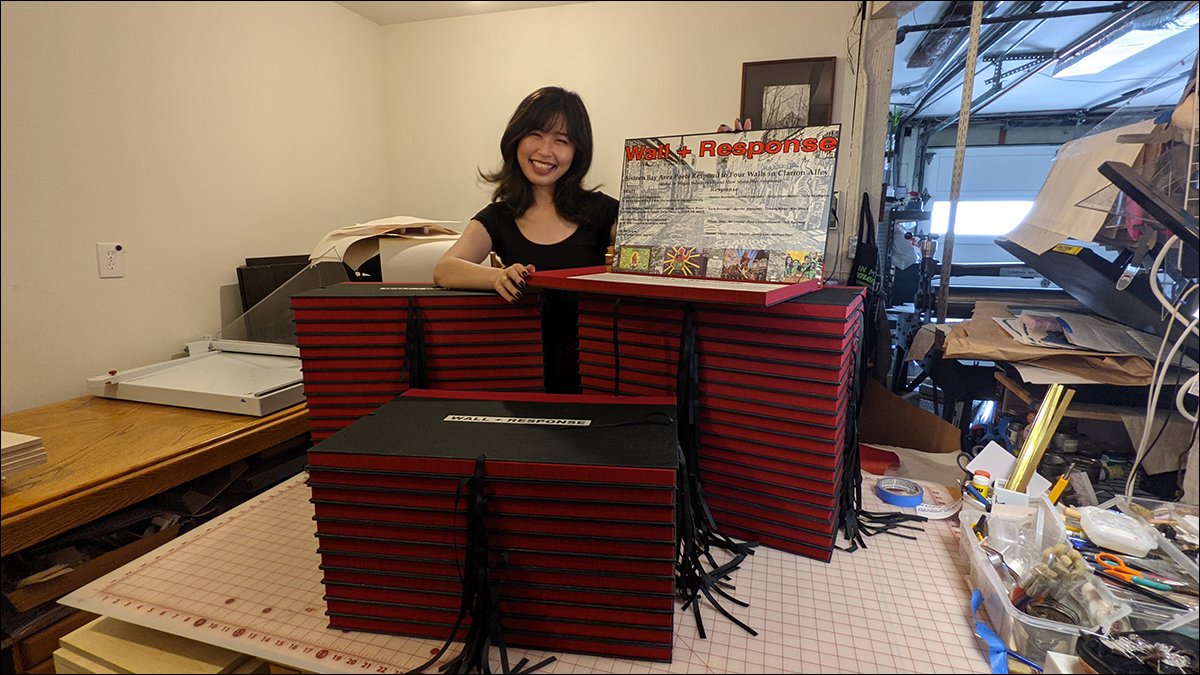
The most rewarding aspect of Wall + Response has been the community spirit and support that has grown with the project, including working together with the exhibitions’ team at SFPL over the course of four months. This collective drive was amplified by various programs scheduled at that Library in the months leading up to our exhibit that featured many of the Wall + Response participants, including the exhibition Monsters & Heroes, a selection of political graphics from the San Francisco Poster Syndicate, and The Art of Protest, posters created during protests and student strikes against the Vietnam War, in support of Black liberation, ethnic studies, and other struggles for social justice in the sixties and seventies.
SFPL Calls for Censorship of Wall + Response after Four Months of Preparation
The positive flow abruptly ceased when I returned a call to SFPL’s director of communications one week before the show was to open. She informed me images of the Arab Liberation Mural by Art Forces, working with the Arab Resource & Organizing Center would need to be removed from the exhibit to avoid the Palestine/Israel debate. More specifically, she noted the problem was with the phrase “Zionism is Racism” written on one of the small protest signs within the mural.
Arab Liberation Mural by Art Forces, working with the Arab Resource & Organizing Center (AROC)
Without thinking, I adopted her saccharine sweet tone, the one that institutions often use when delivering bad news, and said, “Oh, we can photoshop that out, it’s not a problem.” She pushed further, doubting this was possible. It wouldn’t be a problem, I replied, my head spinning with a million different thoughts; none of which included any intention to edit the work. Rather, I was being sarcastic, though I can understand why it might not have been interpreted as such since we were speaking over the phone and had never met.
She went on to say one of the figures depicted in the mural is a terrorist. I could feel my hackles rising. It felt like a betrayal – to me, to Maw, to all the participants who had invested their time and energy, and most of all, to Palestinian and other Arab communities.
Nothing in the mural is harmful or connotes violence; instead, it’s a beautiful work that represents the collective will of people living under an apartheid state to return to their homes and land, which they have been violently forced to leave, or to live as second-class citizens. Additionally, the work has been showcased in other public contexts as a positive message, including a feature in the San Francisco Chronicle about Wall + Response. Most recently Oakland Unified School District featured the mural as part of their campaign for Arab American Heritage Month 2022.
Oakland Unified School District’s Arab American Heritage Month 2022 campaign
I tried to make the point to the SFPL communications director that the work is aligned with other social justice movements, including the work of the Black Panthers and Black Lives Matter, but we each continued to speak over one other; her claiming the library staff was too fragile and beaten down after Covid to handle the work, and me calling the decision an act of targeted censorship.
I left the conversation thoroughly rattled, in part because of the betrayal I felt from SFPL, but also because of the unwavering support of a nation created through a colonial movement that led to the ethnic cleansing of 530 villages and the forced expulsion of at least 750,000 Palestinians – and is now actively and openly operating as an apartheid state with support from institutions and individuals considered to be social justice advocates. My reaction to this atrocity stems from trauma I experienced as a youth, trapped by circumstances in which I had little or no control, and for which I was framed as the problem.
The Trauma of Being Silenced and Treated as a Pariah by Forces of Power and Money
I grew up in Billings, Montana, the largest city in the state with a population of 100,000; the closest urban area is Denver, eight hours away. Billings is bordered by the Crow Indian reservation and surrounded by a breathtaking natural environment with plains to the east and north, and the Rocky Mountains to the south and west. The city is also lined across the north side with rim rocks that house a myriad of caves and wildlife. The culture of Billings is a mix of the painful and violent history of “manifest destiny” that annihilated much of the indigenous peoples and wildlife of the West and gave justification to the white elitism that now primarily runs Montana. My parents were part of the affluent white community of doctors, lawyers (my father was a partner in the largest law firm in the state), and businessmen who controlled the city and by extension much of the state. These were the people who my mother and her friends would refer to as “such lovely people”, many of whom I’d see in church on Sundays performing to be good, moral Christians. However, a significant number of these supposedly pious beings were anything but when it came to how they lived their lives.
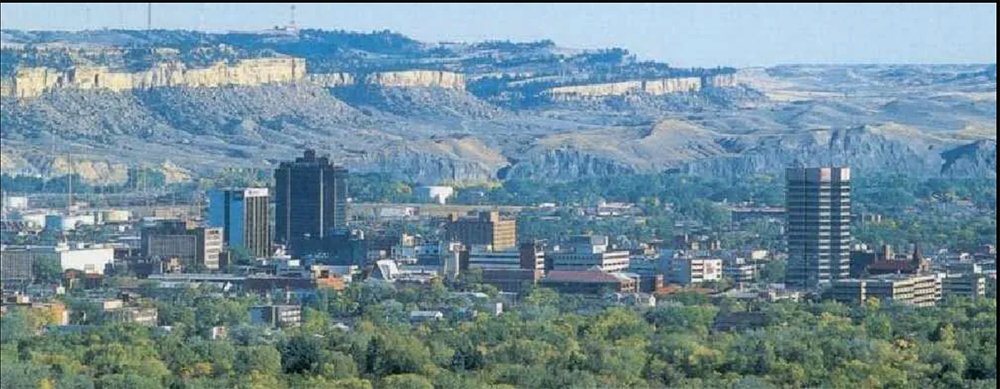
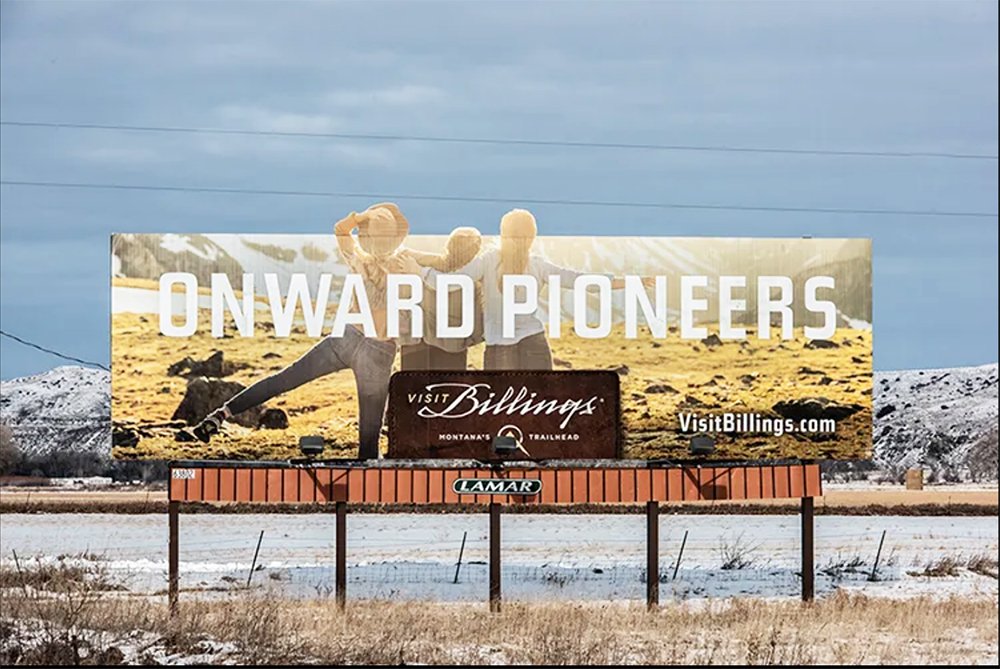
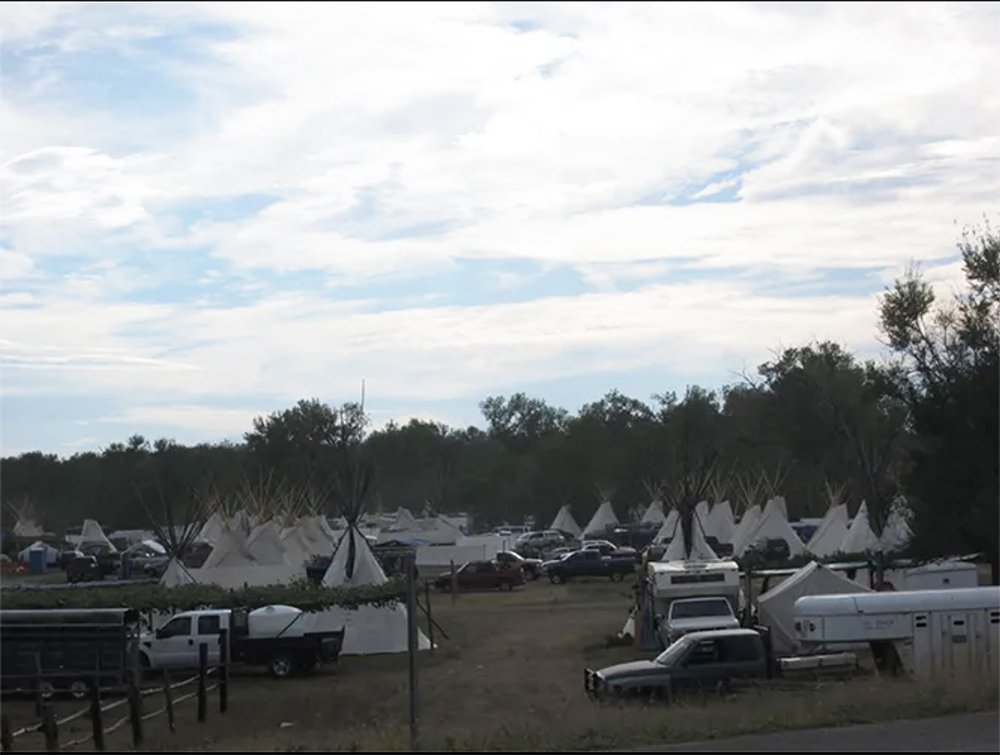
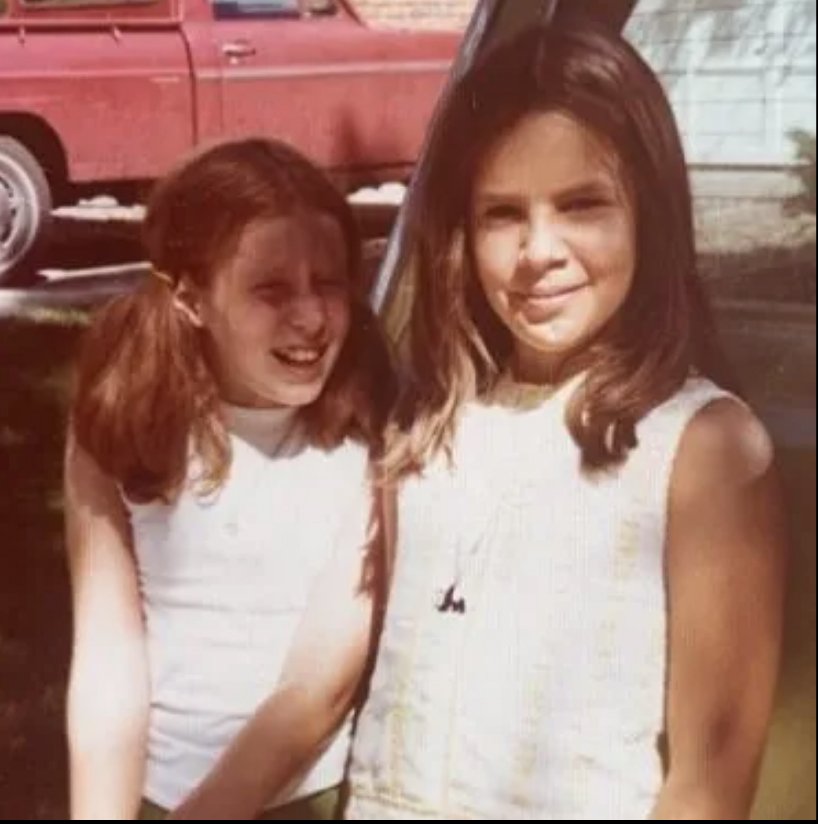
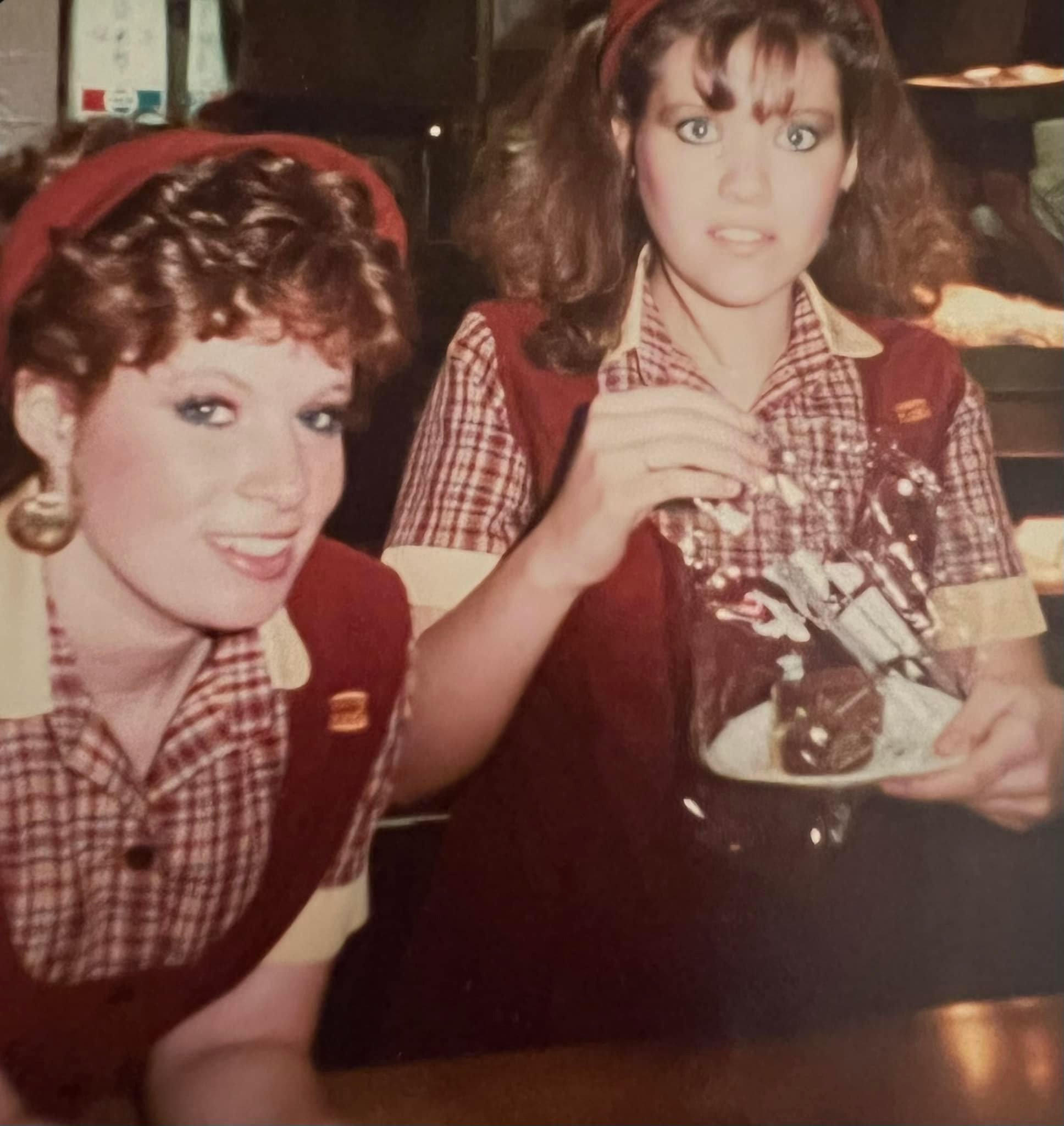
My direct experiences included being violated by a family friend as a young child and made to feel it was my fault because, as he reprimanded me, I had dressed provocatively, showing too much skin; I was seven years old. Later as a teen I was brutally beaten by this same man and had to listen to him tell the police I was a “problem kid,” while my own mother who had witnessed the assault supported his story. I was an alcoholic at 14 and had attempted suicide twice by the time I was 16. After the assault by my mother’s married boyfriend, also an attorney, my father, whose wife didn’t want me moving in with their family, arranged for me to move into the basement of a woman he knew from church who had two young children. I soon became anorexic and started working at Burger King 30 hours a week to support myself while finishing high school.
Not surprisingly, my social circles in Billings were a stark contrast to my parents’. My closest friends and boyfriend were Sioux, Crow, and Oneida and they and their parents worked hard – often taking second, and sometimes third jobs. Most notable to me was that their families were close in a way that was foreign to my familial experience. And while my friends were concerned and wanted to intervene, that would not have ended well for me or them, given the systemic structures of power that always seem to favor whichever side the power and money are on.
While I can’t speak to the experience of Palestinians or other communities living in an apartheid state, I can speak to what it is like to be viciously attacked, to be forced to leave my home, and to be treated as a pariah with little support, especially from those who are seen by themselves and others to be good humanitarians.
Block the Boat, Oakland, CA, 2021
Resolution and Revolution are Possible, Never Doubt the Power of The Will To Live
Following the call with the communications director at SFPL, Maw and I informed the Wall + Response participants of the new development and like us they were incensed, and our collective energy swelled. A letter outlining our concerns and asking the library to reinstate the exhibition in full was drafted, signed, and sent to the senior SFPL administrators. The next day we were told the exhibition could move forward, but only if the phrase “Zionism is Racism” was edited out. We responded, concluding:
To keep our integrity, the integrity of the work, and to honor a community that values and respects truth and critical thinking, the only resolution for us is to move forward with the exhibition as is and to inform our communities about this shameful decision by the SanFrancisco Public Library.
This is not to say resolution and/or revolution aren’t possible. I forgave both my parents after years of limited or no contact and had a close relationship with each of them until and through their deaths. I could see my mother’s choices had been an outgrowth of the structural misogyny she grew up in and lived. My father evolved and changed in a way that allowed me to forgive and grow to respect him; had he not, we would have remained estranged.
The situation in Palestine/Israel can also change. Human rights organizations Amnesty International, Human Rights Watch, Yesh Din, and B’Tselem, as well as the United Nations Economic and Social Commission for Western Asia and Harvard Law School have all determined Israel to be an apartheid state. Support for the end of the Israeli occupation continues to grow throughout the world as demonstrated over the past year with hundreds of thousands protesting in cities across the U.S. and beyond to demand justice and the right of return for Palestinians. In the Bay Area, Local 10 of the International Longshore Warehouse Union (ILWU) supported thousands to achieve a historic Boycott, Divest, and Sanctions Movement victory by blocking the Israeli ZIM-operated Volans cargo ship from unloading.
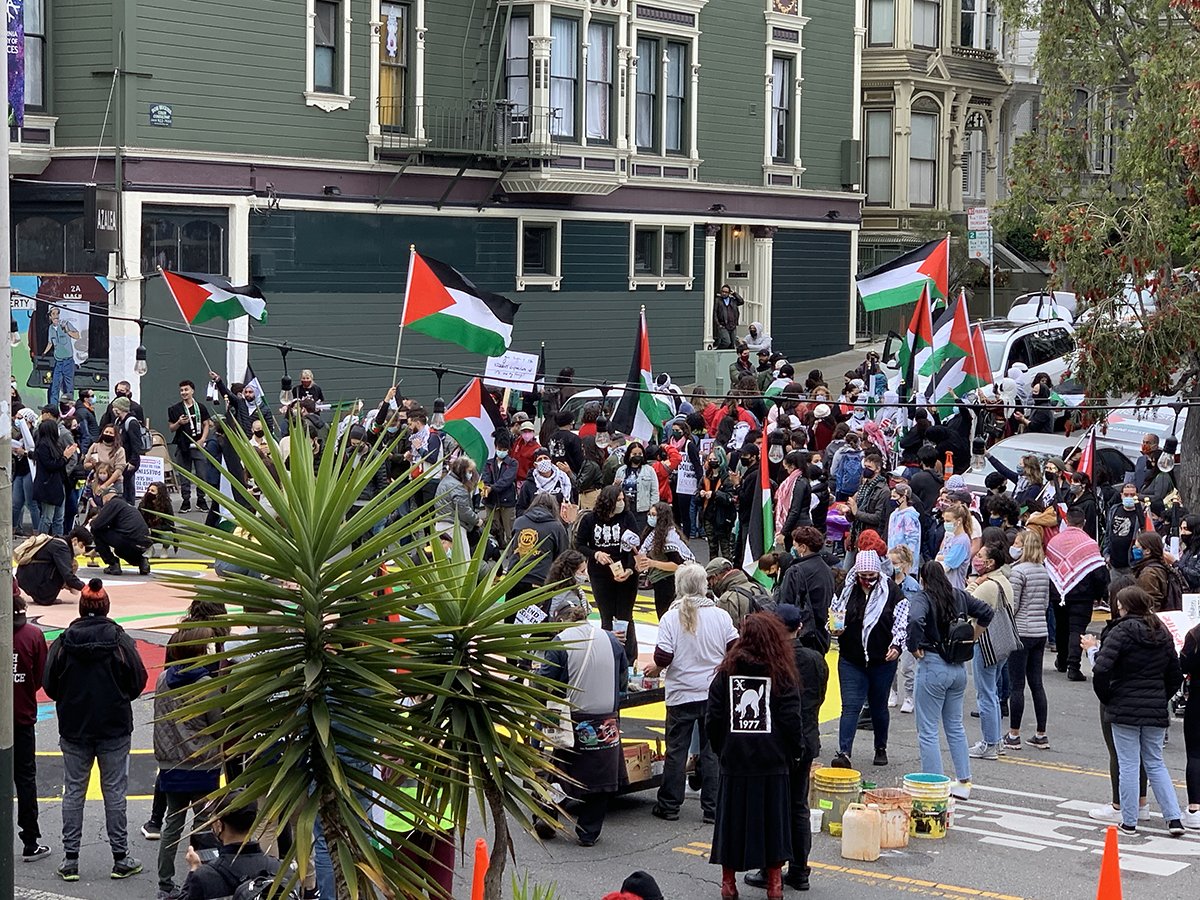
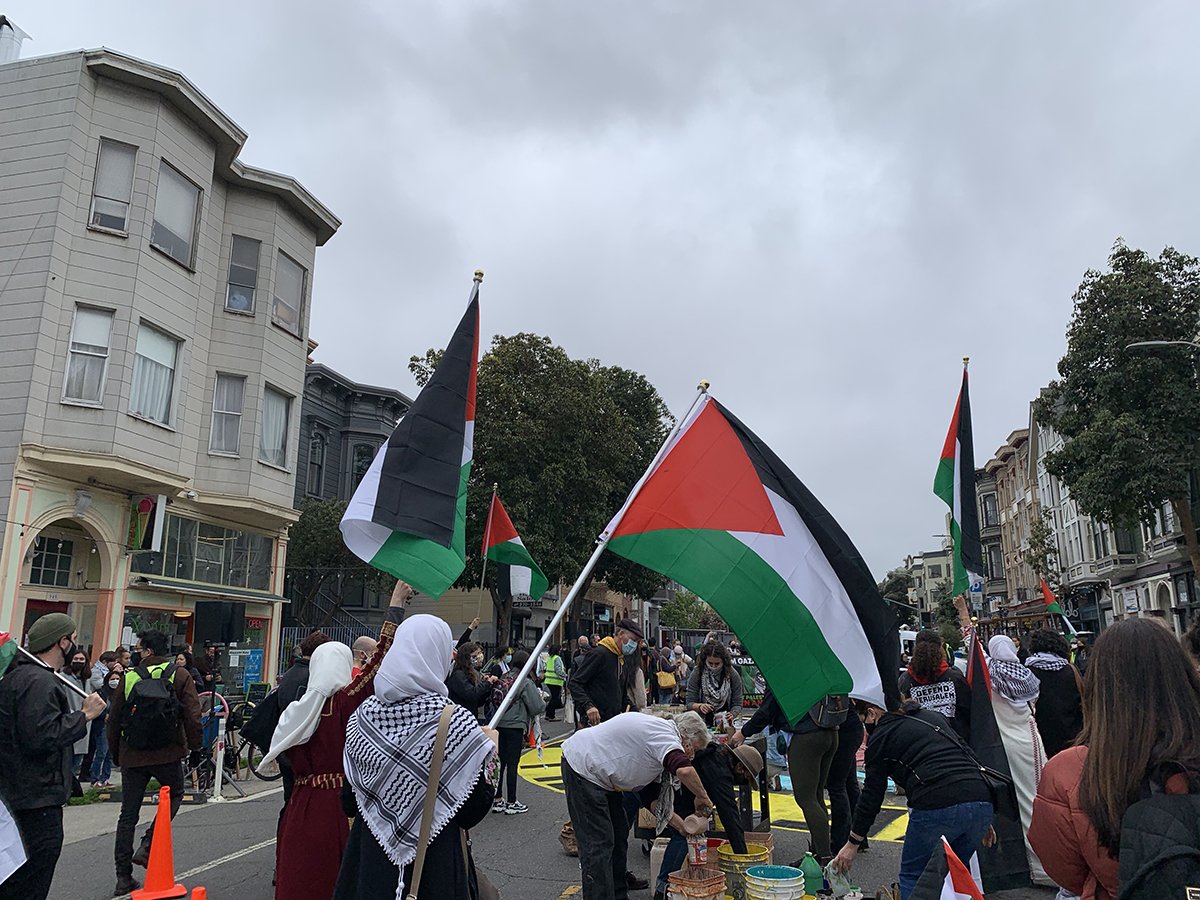
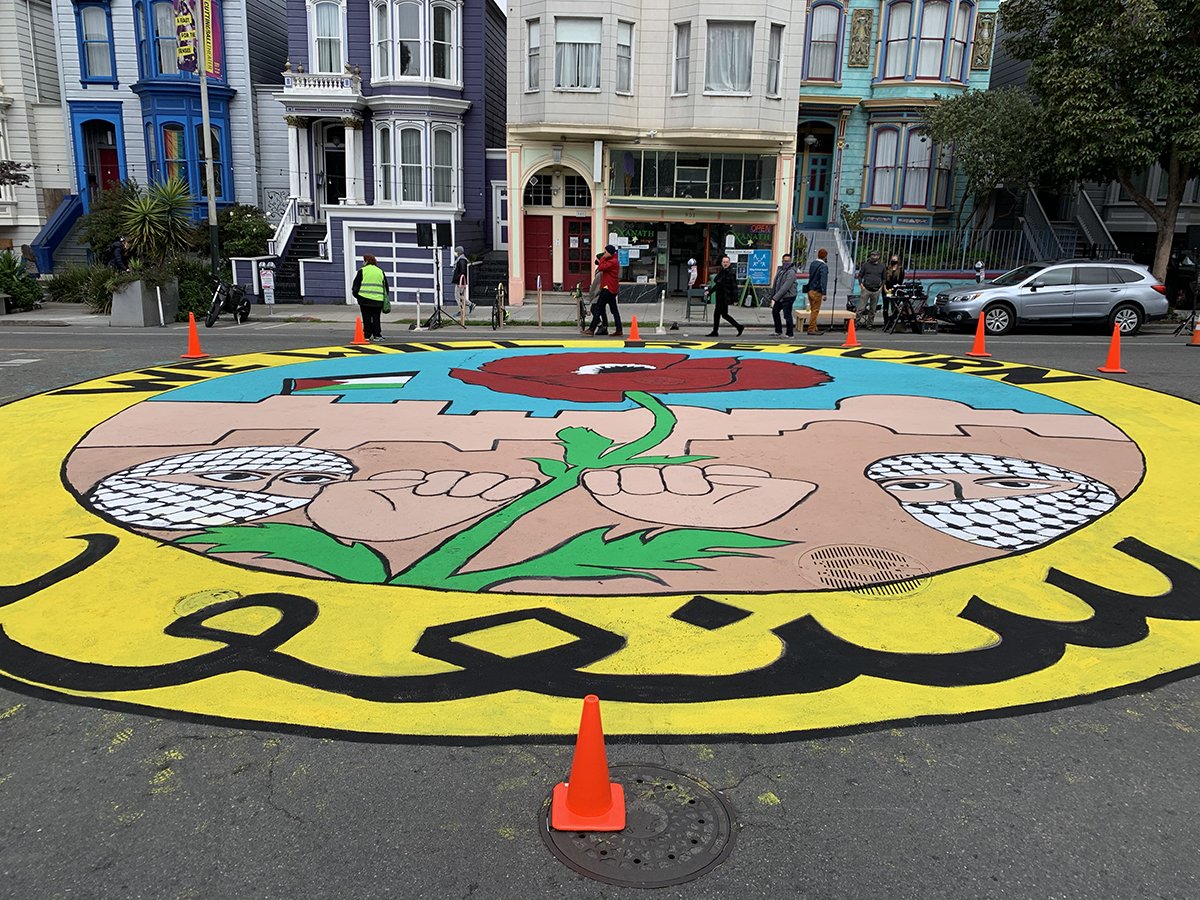
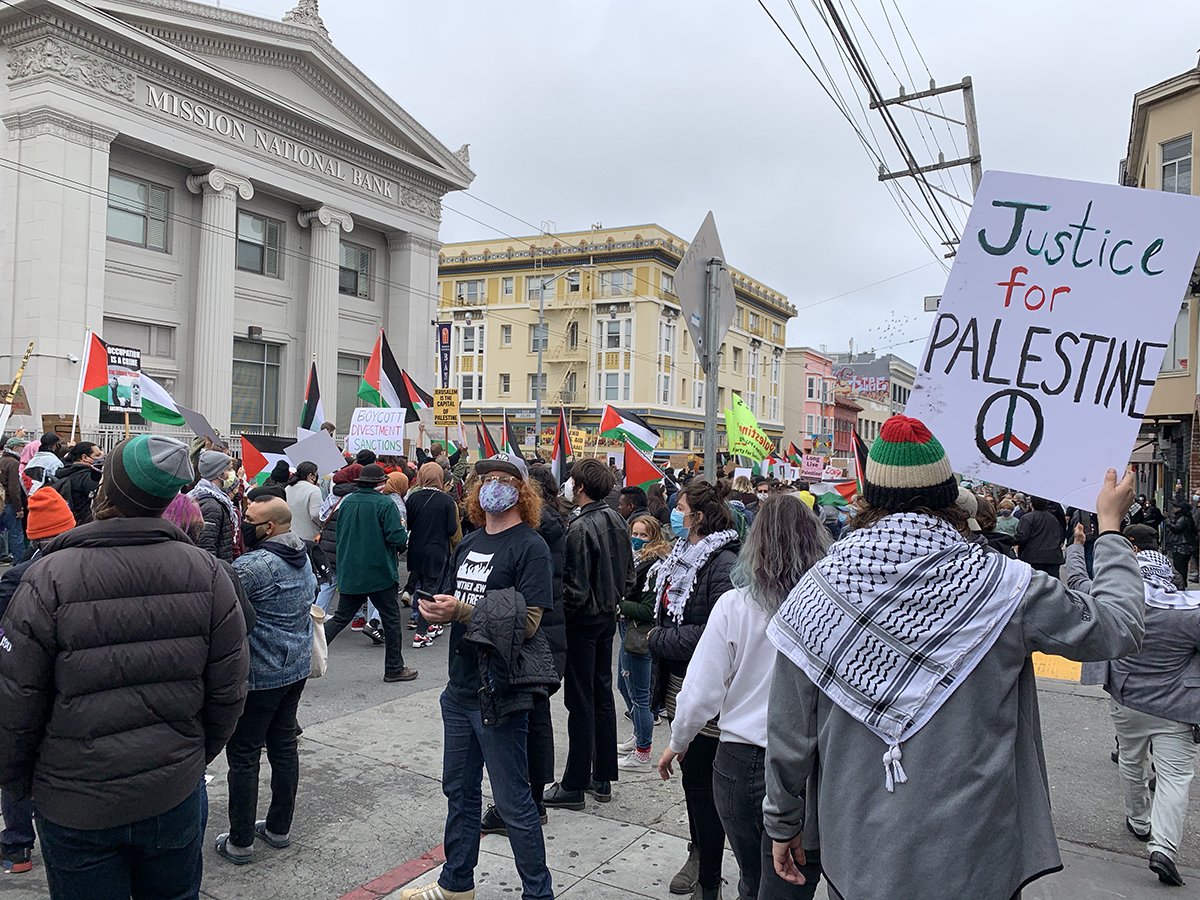
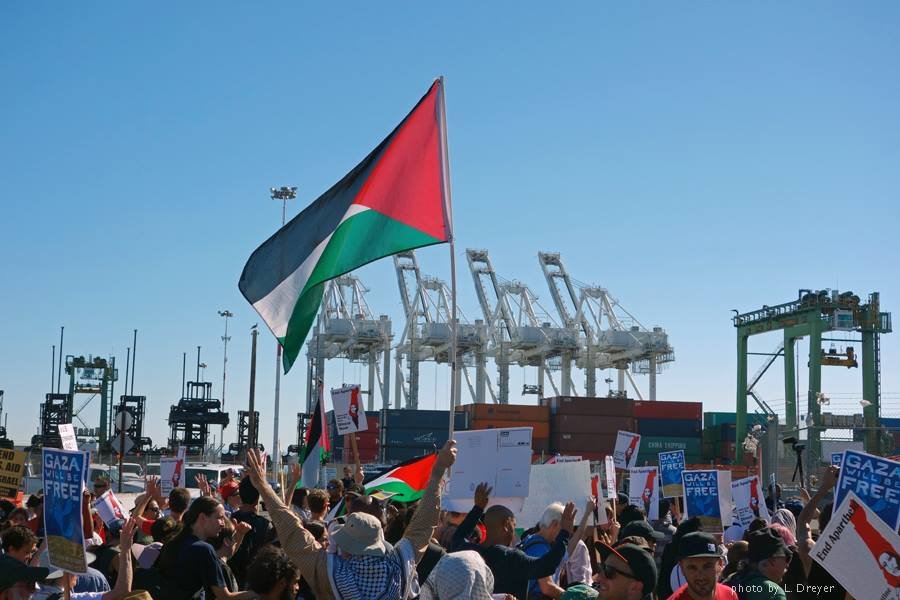
Humanity is at a critical point in its history as many are waking up to the undeniable and devastating impacts of racial injustice, misogyny, and ecocide – for everyone – including the perpetrators willing to do anything to keep these heinous and interconnected practices in place. We need only look at where these systems of power have led us, and the potentially irreversible path of destruction and suffering we’re currently on if we stay silent and complicit.
We hold out hope that the San Francisco Public Library will do the right thing and move forward with the Wall + Response exhibition as we had planned and worked on together for four months. The show would also be a valuable opportunity to provide public programming which would allow the artists and organizers to share the experiences that informed and inspired them to paint the murals and to hear the poets read their responses to the work.
If the SFPL declines, we will continue to move forward telling these stories that must be told in full and taking action to keep our communities awake and alive.




